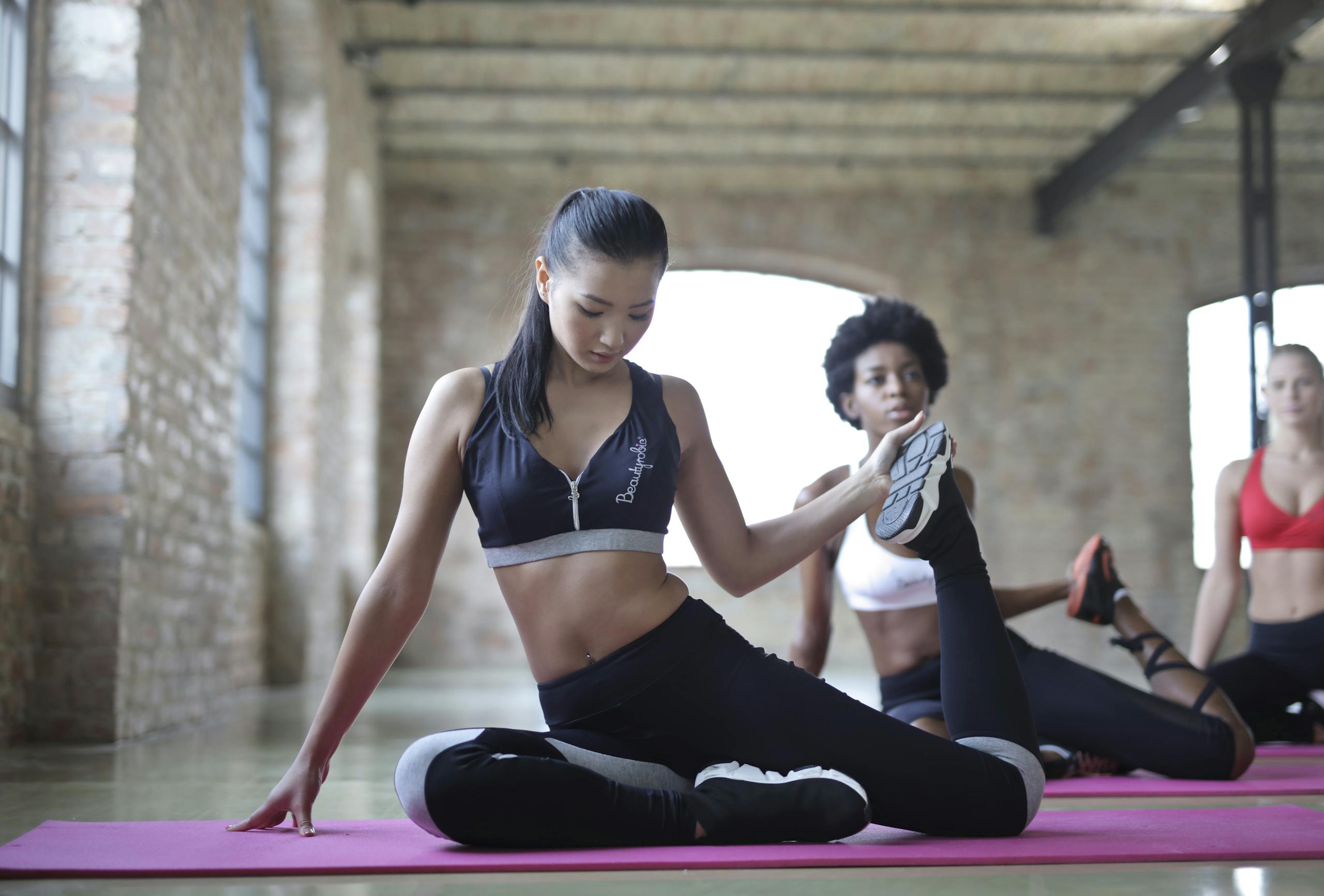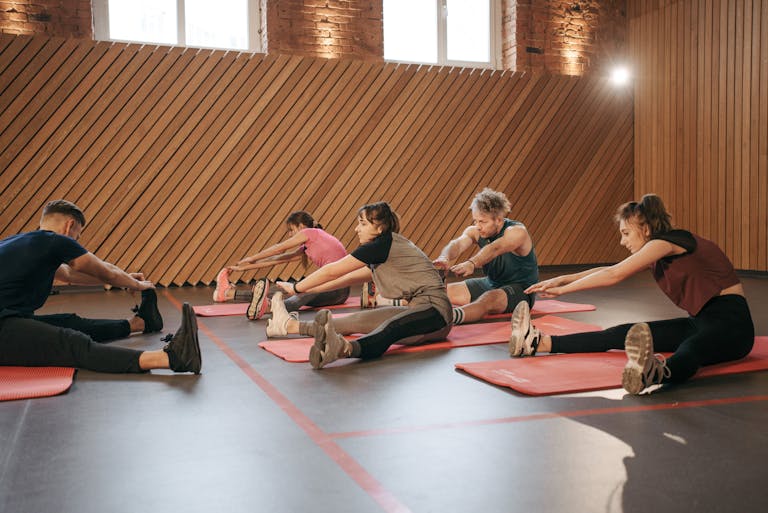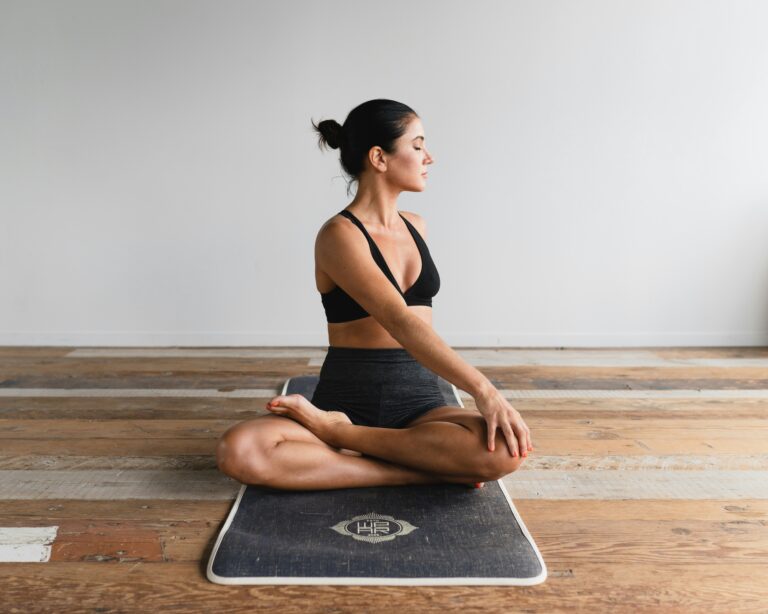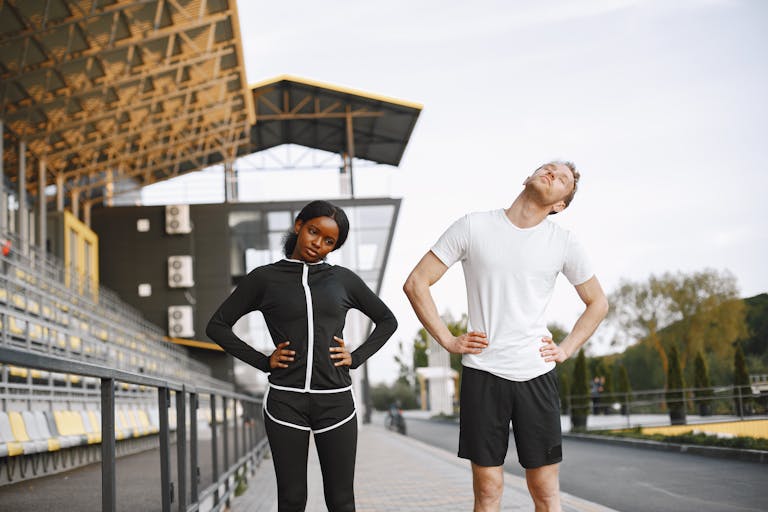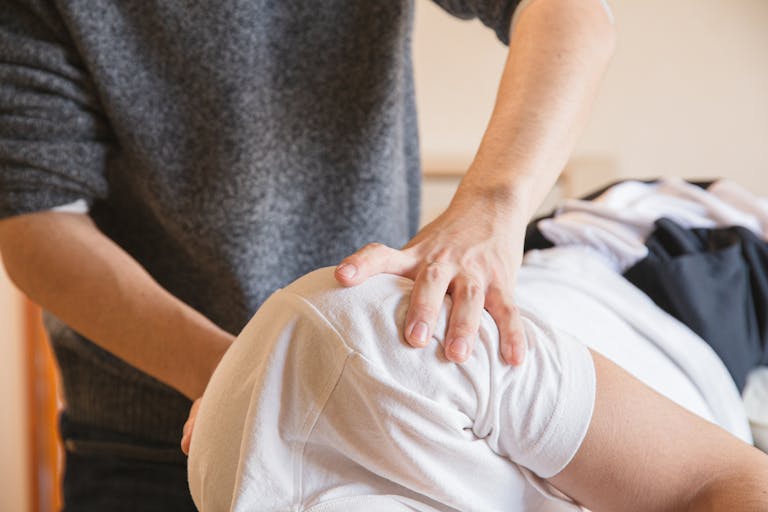Do high-impact workouts leave you feeling more sore than strong? You’re not alone. Many fitness enthusiasts find themselves caught in a cycle of intense exercise followed by days of recovery, wondering if there’s a better way to stay active without the constant ache. Muscle pain is a common outcome of intense workouts, and distinguishing between normal soreness and more severe pain is vital for long-term health.
The good news is that practical fitness doesn’t require pounding your joints into submission. Low-impact workouts offer a more innovative approach to exercise—one that builds strength, improves cardiovascular health, and enhances flexibility while being gentle on your muscles and joints.
Whether recovering from an injury, dealing with joint pain, or simply looking for a more sustainable way to stay fit, low-impact exercise can transform your fitness routine. This post will explore why these gentler workouts are so effective, introduce you to four powerful low-impact exercises, and provide practical tips to help you start your wellness journey.
Why Low-Impact Workouts for Muscle Pain are a Game-Changer
Low-impact exercise refers to any physical activity that minimizes stress on your joints while still providing cardiovascular, strength, and flexibility benefits. Unlike high-impact activities that involve jumping or jarring movements, low-impact workouts keep at least one foot on the ground or use water or equipment to reduce the force on your body.
The benefits extend far beyond joint protection. Research shows that low-impact exercise can reduce injury risk by up to 50% compared to high-impact alternatives. This makes it an ideal choice for people with arthritis, those recovering from injuries, or anyone who wants to maintain long-term fitness without wear and tear on their body. A low-impact exercise program can also complement or be an alternative to other treatments for joint and muscle issues.
Low-impact doesn’t mean low-intensity. These workouts can elevate your heart rate, build muscle strength, and improve endurance as effectively as their high-impact counterparts. The key difference is that they achieve these results through sustained, controlled movements rather than explosive actions that stress your joints.
For individuals with chronic conditions like osteoarthritis or fibromyalgia, low-impact exercise provides a path to improved mobility, pain management, and managing symptoms such as stiffness and inflammation. The gentle nature of these workouts helps reduce inflammation and stiffness while strengthening the muscles that support your joints.
Top Low-Impact Exercises for Muscle and Joint Relief
Yoga
Yoga combines gentle stretching, strength building, and stress relief in one comprehensive practice. Its controlled movements and focus on proper alignment make it excellent for joint health while building functional strength throughout your body. Yoga also enhances the mind-body connection, supporting both mental and physical well-being.
Beginner-friendly poses like Cat-Cow stretches help mobilize your spine and relieve pain and back tension. Downward Dog strengthens your arms and shoulders while stretching your hamstrings and calves. These foundational poses form the building blocks for a sustainable yoga practice.
Different yoga styles offer varying benefits. Hatha yoga focuses on gentle stretching and is perfect for beginners or those seeking relaxation. Yin yoga involves holding poses for extended periods, promoting deep muscle relaxation and helping to improve flexibility. Both styles support joint health while reducing stress levels.
Swimming
Water-based exercise is often called the perfect workout, and for good reason. Water supports up to 90% of your body weight, dramatically reducing joint pressure while providing natural muscle-strengthening resistance.
Lap swimming provides excellent cardiovascular benefits while working your entire body and allows for a full range of motion with minimal joint stress. Water aerobics offers a social, structured approach to aquatic fitness. Even simple activities like walking in water or treading water can provide significant health benefits.
Swimming is particularly beneficial for people with joint pain or mobility limitations because of its buoyancy. The hydrostatic pressure of water also helps reduce swelling and supports circulation, making it an ideal recovery activity.
Cycling
Both stationary and outdoor cycling provide excellent low-impact cardiovascular exercise while strengthening your legs and core muscles. The circular pedaling motion is gentle on joints and helps reduce strain on both joints and muscles, making cycling a safe option for those with pain or injury concerns while building endurance and muscle tone.
Indoor cycling on a stationary bike allows you to control your environment and intensity. Outdoor cycling adds the mental health benefits of fresh air and changing scenery. Both options provide significant cardiovascular and lower-body strengthening benefits.
Proper bike fit is crucial for maximizing comfort and preventing injury. Adjust your seat height so your leg slightly bends when the pedal is at its lowest point. Position the handlebars at a comfortable height to avoid straining your back or neck.
Pilates
Pilates focuses on core strength, flexibility, and body awareness through controlled, precise movements. Regular Pilates practice significantly improves core strength, flexibility, and joint support. The emphasis on proper alignment and controlled motion makes it ideal for building strength without stressing joints.
Fundamental exercises like The Hundred improve core strength and breathing coordination. Leg Circles enhance hip mobility and core stability. These foundational movements can be modified to match any fitness level.
Simple equipment like resistance bands or exercise balls can enhance your Pilates practice at home. A quality mat provides cushioning and stability for floor exercises. Many Pilates movements require no equipment, making it an accessible option for home workouts.
How to Get Started with Low-Impact Exercise and Joint Pain Treatment
Begin by clarifying your fitness goals. Are you seeking pain relief, improved mobility, or general fitness? Understanding your “why” will help you determine the most appropriate exercises based on your specific needs or symptoms and stay motivated throughout your journey.
Start with 15-30 minutes of manageable sessions, 2-3 times per week. This frequency allows your body to adapt gradually while establishing a sustainable routine. As your fitness improves, you can increase duration or frequency based on your feelings.
Invest in quality basic equipment to support your practice safely. A non-slip yoga mat provides stability for floor exercises. Well-fitting swimming goggles make pool workouts more comfortable. A properly adjusted bike prevents injury and enhances enjoyment.
Listen to your body throughout your fitness journey. Low-impact exercise should feel challenging but not painful. Mild muscle fatigue is normal, but joint discomfort or sharp pain signals the need to modify your approach or consider developing a personalized joint pain treatment plan. If you experience ongoing pain or injury, consult your doctor for guidance on safe exercise choices and to help create a treatment plan tailored to your needs.
Build consistency through experimentation. Try different activities to discover what you enjoy most. Variety prevents boredom and works various muscle groups. The best exercise routine is one you’ll stick with long-term.
Common Myths About Low-Impact Exercise
Many people believe low-impact means less effective, but research proves otherwise. For most people, low-impact workouts are effective for building strength and fitness. Studies suggest low-impact workouts can build strength and cardiovascular fitness as effectively as high-impact alternatives, often with better long-term adherence rates.
The misconception that low-impact exercise is only for beginners couldn’t be further from the truth. Professional athletes regularly incorporate low-impact training for recovery and injury prevention. Olympic swimmers, cyclists, and yoga practitioners demonstrate that low-impact doesn’t mean low-performance.
Elite athletes use these methods strategically to maintain fitness while allowing their bodies to recover from intense training. This approach extends careers and reduces injury rates, proving that smart training trumps simply training hard.
Transform Your Fitness Journey Starting Today
Low-impact workouts offer a sustainable path to improved strength, cardiovascular health, and flexibility without the joint stress of high-impact alternatives. These exercises provide genuine results while supporting long-term joint health and overall wellness. Incorporating low-impact exercise into your routine can improve the quality of life for those experiencing joint or muscle pain.
The beauty of low-impact exercise lies in its accessibility. Whether you choose yoga, swimming, cycling, or Pilates, you’re investing in a form of movement that can grow with you throughout your life. These activities fit seamlessly into a healthy lifestyle, adapting to your changing needs while consistently delivering health benefits.
Take the first step by choosing one exercise that appeals to you most. Start with a short session this week, focusing on proper form rather than intensity. Your joints will thank you, and your future self will appreciate the foundation you’re building today, as improved joint health supports your daily activities and overall well-being.
Ready to energize your life with smarter exercise choices? Read our free beginner’s guide to low-impact workouts and join thousands of others who achieve their health goals through sustainable fitness practices.
Medical Disclaimer:
This content is for informational purposes only and is not intended as medical advice, diagnosis, or treatment. Always consult with a qualified healthcare professional before making any changes to your diet, exercise, or health routine. Never disregard professional medical advice or delay seeking it because of something you have read on this site.

